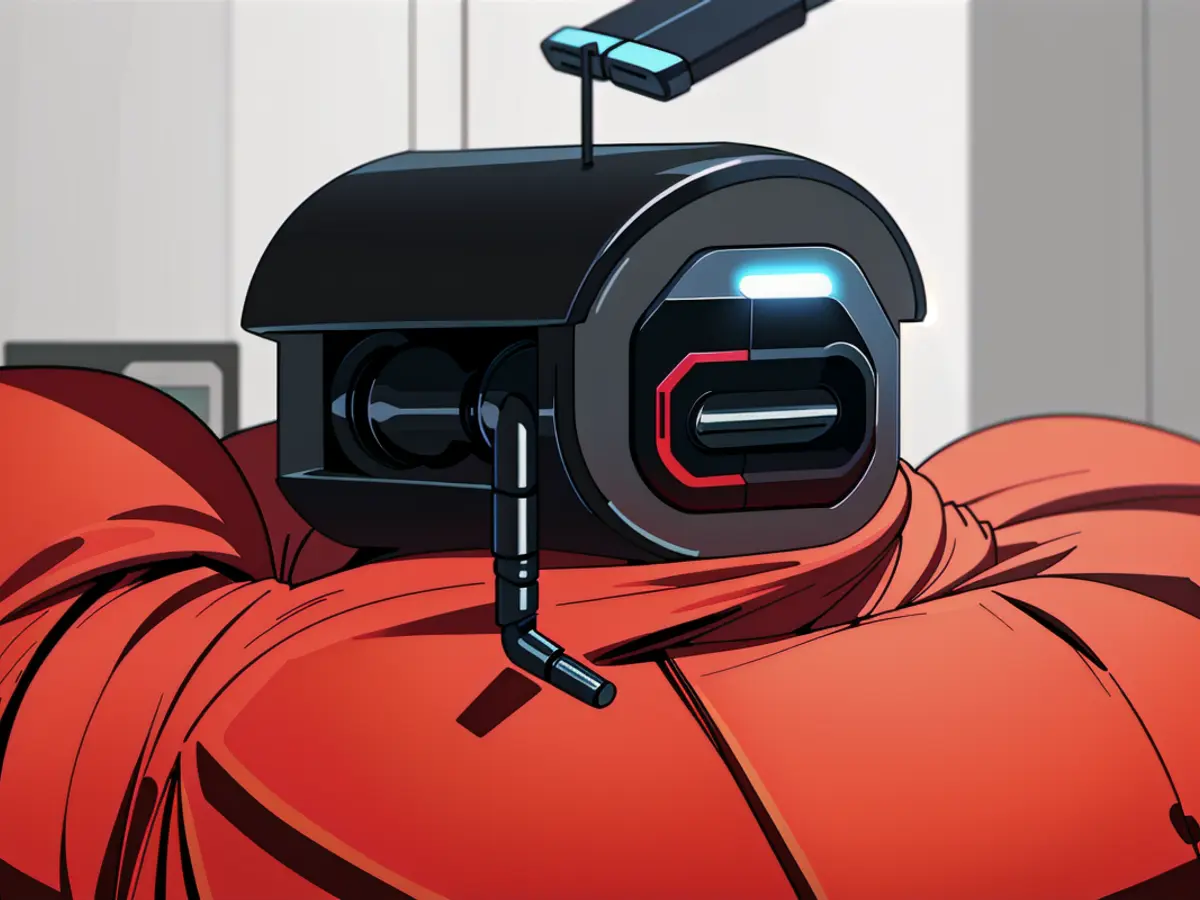Review of Bowers & Wilkins Pi8 Earbuds: Essential Audio Equipment for Music Enthusiasts
The Bowers & Wilkins Pi8 earbuds, without a doubt, are the superior wireless earbuds I've listened to this year, and at $400, they ought to be. These top-of-the-line earbuds are compact and robust, offering the stylish and comfortable fit we've come to expect from high-end products. The companion app is user-friendly, and the earbuds have robust Active Noise Cancellation (ANC).
However, the Pi8's main selling point is its stunning audio quality. No matter the genre, the audio will impress – even with podcasts. The highs, mids, and lows are well-balanced, providing a spacious soundstage. These earbuds are an excellent investment for the audiophile in your life.
While the Pi8 certainly excels in many areas, it's not without its flaws. The call quality could be improved, and the battery life isn't as long as that of its competitors. Nevertheless, if you're looking for earbuds designed to let you experience music as music producers and sound engineers do, the Bowers & Wilkins Pi8 earbuds deliver.
Bowers & Wilkins Pi8: Design and Comfort
Despite its slightly larger charging case (1.6 ounces, 2.6 x 1.1 x 2 inches), the Pi8 earbuds are relatively small. At 0.24 ounces, they are almost as light as some of my favorites, such as the Sony WF-1000XM5 (0.21 ounces).
The Pi8 features a sleek design, combining glossy and matte plastics with a thin vent separating the two. The tops of the Pi8 are shiny, displaying "Bowers & Wilkins" in the center, while the rest of the housing is matte black with four gold-colored connectors, a sensor, and a mic vent. The earbuds feature one of the smallest silicone ear tips I've seen. Bowers & Wilkins includes three additional tips to ensure a proper fit. My review pair of the Pi8 arrived in Anthracite Black, which looks lovely, but the Jade Green or Midnight Blue editions are quite stunning.
The Pi8 is not only stylish but also has a bit of durability built-in, boasting an IP54 rating, which means they are protected against dust and light water sprays. The Pi8 is more durable than the XM5, which has only an IP4 rating.

The charging case, like the earbuds, is made of matte Anthracite Black plastic with a thick band stamped with "Bowers & Wilkins." A status light sits directly below. A USB-C charging port is located at the bottom of the case. The case is slightly larger than the XM5, which weighs 1.4 ounces and measures 2.5 x 1.8 x 1.04 inches.
With my small, peculiar ears, I never thought I'd need to switch to larger ear tips, but here we are. The Pi8 includes the extra small ear tips by default. They were too small, forcing me to switch to the small tips. From there, I was comfortable, and the seal was secure enough to tackle my elliptical machine for six hours straight.
Bowers & Wilkins Pi8: Controls
The Pi8 features fewer tap controls than other flagship earbuds. Play/pause and answering calls are accomplished with a single tap, while skipping forward on a track and ending a call require a double tap. To access the voice assistant, press and hold the right bud, and to switch between Passthrough and ANC, press and hold the left bud.
My only complaint is that the initial pairing must be done through the app. It's a minor inconvenience, but sometimes listeners prefer to jump straight into listening instead of dealing with a companion app. But as far as companion apps go, this one isn't bad.
The interface is straightforward, with an adjustable equalizer and Passthrough and active noise-cancelling modes. The app also allows you to access several streaming services, including Tidal, Deezer, Pandora, TuneIn, NTS, and Soundcloud, as well as offering a two-month free trial of Qobuz. Although it would be nice to have a "find my buds" feature for such an expensive pair of earbuds, Bowers & Wilkins will replace lost earbuds if one goes missing.

Regarding connectivity, the Bluetooth 5.4-compatible earbuds also have multipoint capabilities, allowing them to connect with two separate devices.
Bowers & Wilkins equipped each earbud with three microphones. Two of these microphones are designed to suppress background noise, while the third amplifies your voice for clear conversations. When coupled with a secure fit, these microphones deliver strong active noise cancellation capabilities. However, they may not surpass the performance of the Bose QuietComfort Buds or the Sony WF-1000XM5 in terms of noise reduction. Nevertheless, the Pi8's noise cancellation performs admirably in reducing the commotion of New York City.
©Photo: Sherri L. L. C./DreamSmith LLC
During my neighborhood stroll with the ANC activated, I could understand most discussions nearby without any music playing, just at a reduced volume. The passing train's sounds, such as creaks and bumps, were clearly audible. When I started playing music, the New York City noise was effectively muted. At home, the Pi8's ANC could only suppress the sound of my TV when the volume was set to four. In contrast, the XM5 (volume 6) and the QC Ultra (volume 7) could mute ambient noise significantly better. Ultimately, the Pi8's ANC is more effective at reducing rather than completely eliminating background noise. Few earbuds can accomplish this feat.
The Pi8 includes a transparency mode that allows external sounds to pass through, which is beneficial for conducting outdoor activities or staying alert to your surroundings.
Bowers & Wilkins Pi8 Review: Performance

Claiming to be reference earbuds is a bold move by Bowers & Wilkins. While studio engineers may not switch to wireless buds for mastering work, these earbuds still deliver the most accurate performance possible for a wireless device. If you're fond of boosted bass and treble, these earbuds might not be for you. I prefer a neutral tuning that allows me to switch genres effortlessly, which these earbuds seem custom-built for.
©Photo: Sherri L. L. C./DreamSmith LLC
The secret to Bowers & Wilkins' success is their cone drivers. The company has developed miniature versions of its carbon cone drivers, often used in loudspeakers and headphones. The Carbon Cone drive unit is stiffer and behaves more precisely at high frequencies, preventing bending. This results in quicker responses to dynamic music changes, creating a more powerful and authentic sound. The 12mm carbon cone drivers deliver a balanced, warm performance across all music genres, as I discovered during my Tidal Hi-Fi and Master quality track testing.
Kicking off with Jamirquoi's “Time Won’t Wait,” I was captivated by the rich bass, lively guitar, sleek horns, and snappy percussion. The soundstage is expansive, with every element having its space, even the occasionally spacey sound effects. Without cranking up the volume past 50-60%, I could block out the New York City noise altogether.
The vocals on Doechii’s “ALLIGATOR BITES NEVER HEAL” were angelic, the soft soprano harmonizing with a feisty alto and an energetic tenor. Snoh Aalegra’s “DO 4 LOVE” was so enchanting that I listened to it four times before moving on. The strings sounded rich, swelling into a resplendent crescendo that revealed a vibrant keyboard and a powerful, heartfelt vocal reinforced by beautiful choral backgrounds. These are without a doubt some of the best wireless earbuds I listened to this year.
Bowers & Wilkins Pi8 Review: Call Quality

In terms of call quality, the Pi8 earbuds excel in music and podcast audio but require improvement. I made multiple calls and participated in several video conferences, but only one resulted in satisfactory results. My callers consistently reported that my voice was muffled in the remaining calls and conferences, requiring me to strain to hear them clearly. However, updating the software improved call quality, though not to a significant extent.
Bowers & Wilkins Pi8 Review: Battery Life
Bowers & Wilkins estimates the Pi8's battery life to be 6.5 hours with ANC enabled, though they do not provide a non-ANC estimate. I managed to achieve 8 hours without ANC during my testing. The charging case offers an additional 13.5 hours of battery life, yielding a total of 19.5 hours with ANC and 21.5 hours without. As an advocate for active noise canceling, I managed to squeeze in 6 hours and 35 minutes of music streaming, TV episodes, and calls before receiving a low-battery warning.
While the Pi8's battery life is respectable, it does not compare to the Sony WF-1000XM5's endurance, which lasts 8 hours with ANC enabled and 12 hours without, with the charging case providing an additional 24 hours for a total of 32 hours with ANC and 36 hours without.
Bowers & Wilkins Pi8 Review: Verdict
The Bowers & Wilkins Pi8 offers impressive noise reduction capabilities, expansive soundstage, and rich, balanced performance across various music genres, making it a fantastic option for audiophiles. However, the call quality leaves room for improvement. If you value exceptional call quality and extended battery life, you may want to consider other options on the market.

The Bowers & Wilkins Pi8 has its shortcomings – poor call clarity, absence of a 'find my buds' feature, and decent, yet not exceptional, active noise cancellation. However, the Pi8 stands out with its top-notch reference-grade drivers, delivering exceptional musical audio quality. They're also sturdy, pocket-friendly, and boast a premium look, fitting the profile of high-end earbuds perfectly. As a critic, I can affirm that these will undoubtedly be my primary earbuds for the inaugural quarter of 2025. The challenge lies with other flagships to dethrone them from my preferred list.
In light of the Pi8's outstanding audio performance, future reviews might also focus on how these earbuds compare to other top-tier technology in the market, particularly in terms of audio quality and noise cancellation. Furthermore, users who are tech-savvy and value high-end audio may be interested in learning about potential software updates that might further improve the Pi8's call quality.






